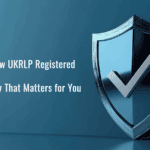Why This Matters
The local café. The train station lounge. The airport gate. Public Wi-Fi is everywhere, and it’s made working on the move easier than ever. But behind that convenience lies a web of digital risks that most people never see coming—until the damage is done.
Connecting to an open Wi-Fi network can expose your entire digital identity. Your passwords. Your emails. Your business documents. It’s not paranoia; it’s just reality. And in a world where cybercrime is more automated, targeted, and opportunistic than ever, public Wi-Fi is a low-effort, high-reward hunting ground for attackers.
This blog explores what really happens when you connect to public Wi-Fi, how cybercriminals exploit it, and what you can do to stay protected without giving up the flexibility you need.
The Hidden Dangers of Free Wi-Fi
Free Wi-Fi isn’t free—it comes with hidden risks. Public networks often have little to no encryption. There are no restrictions on who connects. And while you’re sipping your flat white and checking emails, someone two tables down could be monitoring your activity without you ever knowing.
Man-in-the-Middle Attacks
When you send data over an unsecured connection, that data can be intercepted in transit. This is a man-in-the-middle attack, and it’s one of the oldest—and most effective—tricks in the cybercrime playbook.
Imagine logging into your business email or uploading documents to cloud storage. If someone intercepts that traffic, they could collect your login credentials, attachments, and even session tokens. From there, the door is wide open to your inbox, your files, your contacts, and more.
Some attackers go one step further, actively modifying data as it passes through. That could mean changing banking details on an invoice you’re about to send or injecting malicious links into a webpage you’re visiting. These aren’t just passive observers—they’re manipulators who can change the outcome of your interactions without you knowing.
Rogue Hotspots
Sometimes the danger doesn’t come from the network you trust—but from the one that pretends to be it. A cybercriminal can easily set up a rogue access point, give it a name like “Coffee_Shop_WiFi_Free”, and wait for you to connect.
Once you do, they’re in control. They can intercept everything you do, redirect you to fake versions of trusted websites, or inject malware into your traffic. It’s invisible, and it happens more often than you think.
In some cases, attackers even mimic the login splash pages you’d expect from a legitimate network. You’ll enter your email and password to “connect” and unknowingly hand over your details to someone with malicious intent.
Passive Data Interception
Not every threat to public Wi-Fi is obvious. Some attackers sit quietly on the same network and simply watch the digital traffic flowing through the air—this is called passive data interception.
Here’s how this kind of attack works: when you visit websites or use apps that don’t use proper encryption, the information you send and receive—like the pages you view, the files you download, or the messages you send—can be picked up by someone nearby. It’s a bit like someone secretly listening in on a conversation you thought was private.
These fragments of information, like browsing history or session cookies, can be pieced together to build a profile on you, or worse—used to access your accounts. Cookies stolen in this way can allow someone to hijack your active session, giving them access to your account without ever needing your password.
It’s a quiet, invisible breach that often goes unnoticed until serious consequences surface.
When Public Wi-Fi Becomes a Gateway to Real-World Loss
In 2019, the UK branch of a global financial services firm fell victim to a man-in-the-middle attack after an employee used public Wi-Fi in a train station. The employee, unaware of the risks, accessed the company’s cloud portal over an unsecured network. An attacker intercepted the session, capturing login credentials and later gaining access to sensitive client files.
The breach wasn’t discovered until clients reported suspicious activity linked to their accounts. By then, the attacker had exfiltrated confidential financial reports, contracts, and personal client data. The fallout? Regulatory scrutiny, loss of trust, and an estimated £220,000 in damages—including legal costs, reputational repair, and lost business.
This wasn’t an attack on outdated systems or poorly run IT—it was a moment of routine convenience that opened the door to professional catastrophe. It’s a real-world example of how easy it is for one unsecured connection to unravel months—or years—of trust and effort.
These aren’t stories meant to scare—they’re real-life examples of how opportunistic and damaging public Wi-Fi threats can be.
How to Identify Safe vs Suspicious Networks
Before you even connect, there are clues to help you separate genuine public Wi-Fi from something more sinister. Here’s what to look for:
Ask for the Official Network Name
Reputable venues—coffee shops, hotels, co-working spaces—usually have a sign posted somewhere in the building with the name of their official Wi-Fi. If it’s not clearly displayed, ask a staff member. Never assume the strongest signal is the right one.
Watch for Naming Red Flags
Fake networks often use variations of legitimate names: “CoffeeShop_WiFi_Guest” vs “CoffeeShop_Free_Public.” Look for spelling mistakes, added symbols, or extra words like “Secure” or “Fast.” If multiple similar networks appear, that’s a red flag in itself.
Be Wary of Login Portals That Ask for Too Much
If the network asks for unusual personal information (like your date of birth, address, or credit card details) just to connect, it may not be safe. Even legitimate captive portals shouldn’t require more than a name and email—or nothing at all.
Look Around: Is Anyone Broadcasting?
If someone is sitting nearby with a laptop that looks like it’s not being used for anything—or positioned close to a power outlet without a drink or a purpose—it could be a mobile hotspot in disguise. A portable Wi-Fi access point can be set up in minutes. Be observant.
Use Caution When Signal Strength Seems Too Good
Some rogue hotspots boost their signal to ensure they’re the strongest in the area. If the café’s Wi-Fi is usually slow and suddenly you’re getting lightning-fast access from a slightly different name, be cautious.
Once you know how to spot the signs, you’ll feel more confident selecting a network that won’t compromise your security.
Use Mobile Data When It Really Matters
Sometimes, the safest network is the one you already carry in your pocket. When you’re handling sensitive information—like logging into your bank, accessing payroll platforms, or viewing client data—consider using your mobile data instead of public Wi-Fi.
Mobile networks use encrypted connections by default, making them much harder for attackers to intercept than open public networks. While it might use a bit more data, it’s a worthwhile trade-off for peace of mind.
Tethering to your mobile device or using a dedicated mobile hotspot can give you far more control over your connection. It’s a particularly smart move if you’re working from an unfamiliar location or handling critical business tasks on the go.
How to Stay Safe (Without Logging Off for Good)
The goal isn’t to stop using public Wi-Fi—it’s to use it smartly. Here’s how:
Use a VPN (Virtual Private Network)
A VPN encrypts your internet traffic, shielding it from prying eyes. On public Wi-Fi, it’s a game-changer. It won’t make you invincible, but it raises the barrier high enough that most attackers will move on to easier targets.
Good VPNs also mask your IP address, making it more difficult for attackers to track your activity or pinpoint your location. It’s a must-have tool for anyone who works remotely or travels frequently.
Avoid Sensitive Transactions on Public Networks
Skip the online banking, HR systems, and client logins while on public Wi-Fi. If the task involves sensitive data, wait until you’re on a secure, trusted network.
If you must access something sensitive while on the move, make sure you use 2FA, and limit your exposure time. Logging in quickly to check a balance is one thing—handling payroll or transferring funds is another.
Disable Auto-Connect
Devices love convenience, but that convenience can betray you. Disable auto-connect features on your phone or laptop so you don’t unknowingly connect to a malicious network.
Also consider “forgetting” networks after use. This ensures your device won’t reconnect without your knowledge in future, especially if a fake network mimics the name of a previously joined one.
Enable Two-Factor Authentication (2FA)
Always. Every account that offers it. If someone does get your password, 2FA adds another barrier that can stop the breach in its tracks.
Use authenticator apps where possible, as SMS-based codes can still be intercepted with the right tools. This small habit can block the majority of account hijacking attempts.
Keep Your Devices Updated
Outdated software is a gift to attackers. Keep your operating system, apps, and antivirus up to date to patch vulnerabilities that could be exploited over public networks.
Attackers often rely on exploiting known weaknesses. Updates are the digital equivalent of locking your windows before leaving the house. Don’t ignore them.
Look for HTTPS and the Padlock
Only interact with websites that use HTTPS. It’s not perfect, but it adds a crucial layer of encryption—especially when paired with a VPN.
Modern browsers will often warn you when you’re accessing an unsecured site. Don’t ignore those warnings. If it’s not secure, don’t send personal information.
Log Out After Sessions
When you’re done using an account, log out. Don’t leave sessions open, especially on browser tabs that could be hijacked.
Some services maintain active sessions even when the browser is closed. Logging out ensures that session data can’t be reused by someone with access to your device or network traffic.
Safer Habits Start With Awareness
Public Wi-Fi is convenient—but convenience can’t come at the cost of control. Every open network has potential. Potential for productivity, sure—but also for surveillance, exploitation, and loss. Awareness changes that equation.
We’ve covered the real risks: man-in-the-middle attacks, rogue hotspots, passive interception. We’ve looked at what these threats actually look like when they strike. And we’ve laid out simple, effective steps that protect you and your business without slowing you down.
This is what we do at Cyber Rebels. We don’t overwhelm people with jargon or scare tactics—we teach them how to spot threats, build habits that stick, and make safer decisions in the moments that matter most. From remote teams to solo professionals, we help build confidence in a connected world.
💡 If you’re ready to stop relying on luck and start building cyber resilience into your everyday life—book a training session with Cyber Rebels.
Director Of Training and Development
Andy Longhurst is a cybersecurity trainer, web designer, and co-founder of Cyber Rebels. With over a decade of experience in digital safety, education, and web technology, Andy delivers hands-on cybersecurity workshops for small businesses, startups, and corporate teams. Drawing on his background as a teacher and IT consultant, he helps organisations navigate real-world threats through practical, jargon-free training. Andy’s work empowers people to protect their digital lives with confidence. When not running training sessions or consulting on security strategy, he’s usually studying the latest cyber threats and tactics—or making another cup of tea.









